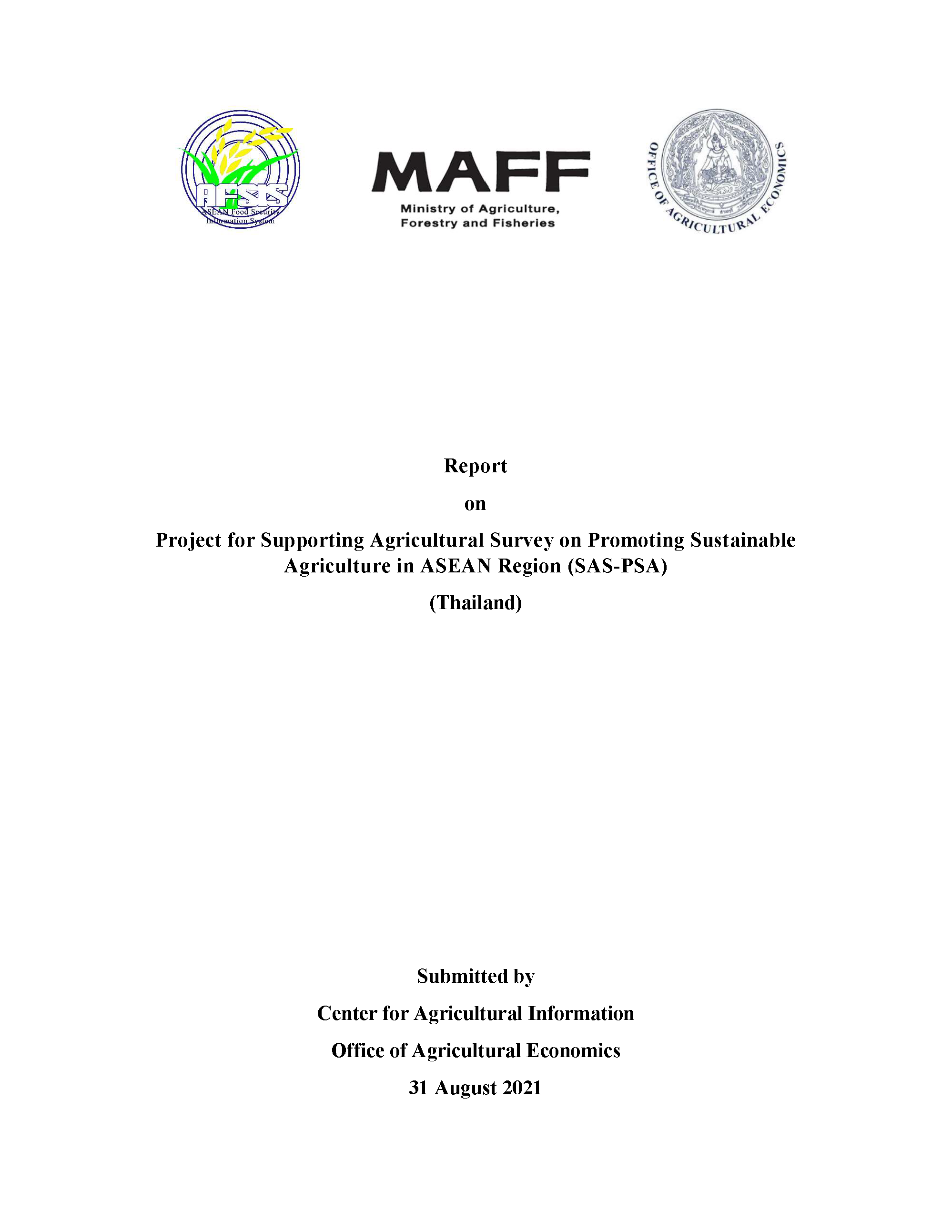


Chachoengsao, located in the vicinity of Bangkok province, is in the eastern part of Thailand. Its area is approximately 5,351 km2 which is ranked as the 40th largest province in Thailand. Chachoengsao province is the target area for this study basically because it gains the reputation of various agricultural practices and eases the quality control of the project. As mentioned earlier, Chachoengsao has highly diversified agricultural activities with particular strength in crops, livestock, and fisheries. These businesses have played distinctively important economic and socio- cultural roles for the well- being of farming households, such as food security, supporting local livelihood household income-generation process, a form of saving, a social status and sources of employment. The livestock species are also of considerable importance for farm families through providing a means of generating income, satisfying household energy requirements, and supporting food supply for consumption of products.
Sub-indicator 1: Farm output value per hectare
Sub-indicator 2: Net farm income
Sub-indicator 3: Risk mitigation mechanisms
Environmental DimensionSub-indicator 4: Prevalence of soil degradation
Sub-indicator 5: Variation in water availability
Sub-indicator 6: Management of fertilizers
Sub-indicator 1 : Farm output value per hectare

Sub-indicator 2 : Net farm income

Sub-indicator 3 : Risk mitigation mechanisms

Sub-indicator 4 : Prevalence of soil degradation

Sub-indicator 5 : Variation in water availability

Sub-indicator 6 : Management of fertilizers

Sub-indicator 7 : Management of pesticides

Sub-indicator 8 : Use of biodiversity-supportive practices

Sub-indicator 9 : Wage rate in agriculture

Sub-indicator 10 : Food insecurity experience scale (FIES)

Sub-indicator 10 : Food insecurity experience scale (FIES) with COVID-19 pandemic situation modification

Sub-indicator 11 : Secure tenure rights to land

SDG 2.4.1 Dashboard
Using data from the pilot survey carried out in Chachoengsao province, it is unmistakable that the sub-indicator with the highest level of unsustainability is Farm Output Value per Hectare with at least 82.21 % of the agricultural area classified as unsustainable


1) The double sampling design suggested by FAO is essential for conducting the future farm survey. The stratification is additionally indispensable for the classification of diversifiedgroups of agricultural holdings (farm household and non-farm household), low, medium, and high intensification of land productivity, and also diversification of landholding size.
2) For data collection, the sample size and distribution should be relatively sizeable to define the agricultural activities of the whole kingdom. Additionally, aggregate evidence in this study suggests that the data collection should be highlighted on important cash crops.
3) The data from farm survey can be supplemented with information from other sources, for example, the data, which has been obtained from agricultural census done by National Statistical Office, would probably accomplish sub-indicator 1 and 2.
4) Some key concepts and their specific definitions are uncommon in Thailand context. Enumerators and respondents have difficulties in comprehending those concepts. Another challenge is some questions in the survey create difficulty in recall, for example, the recollection of profitability in the last three consecutive years. The complicated contents in questionnaire creates respondent burden during the survey. The best practices would be 4.1) the multiple- choice questions would need to be adjusted to suit Thai circumstances, 4.2) the questionnaire should be simplified and comprehendible so that it will not be a burden for both enumerators and selected respondents
5) Essentially, the Thai authorities should discuss with FAO consultants whether aquaculture sector exclusively should be included in the future survey since the sector is one of the major contributions to the agriculture in Thailand


Visitor Info 309915 | Today 234 | Yesterday 432 | This week 3597 | This Month 9898 | Total 309915
Copyright 2017. ASEAN Plus Three
Food Security Information System Rights Reserved.